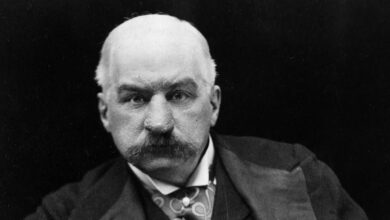
Podcast: Play in new window | Download
Subscribe: Spotify | Amazon Music | Youtube Music | RSS
There is no name better known in the film industry than that of Walt Disney. An American film icon, the very name Disney continues to carry weight decades after the death of its namesake. However, few people know how Walt Disney became successful and know less of his early life.
Walter Elias Disney was born on 5 December 1901. Born into a large family, Walt had a passion for art and drawing even as a child and although art would be his longtime passion, his early life was filled with a more aimless wandering. Moving to Chicago in 1917, Walt Disney attempted to join the United States Army in order to fight in World War I but he was rejected due to him not being of legal age to sign up. He decided the following year to lie about his age and managed to join the American Red Cross arriving in France in November 1918 just after the armistice had already been signed.
Many of Walt Disney’s early cartoons, especially those in his school newspaper, were very patriotic with him creating drawings and artwork on the subject of World War I, and a lifelong love of country was something that Walt Disney would be known for in the decades to come.
Overshadowed by the extraordinary success he would go on to have, few people remember that the first company Walt Disney started actually failed. The company, Laugh O-gram Studio, was bankrupt by 1923 and true success for Walt Disney was still some years away.
On 13 July 1925, Walt Disney married Lillian Bounds in Idaho who had been an ink artist in the Disney studio. The couple went on to have two daughters, Diane who was born in 1933 and Sharon who was born in 1936. In the 1990s Lillian said that Walt was a wonderful father and grandfather and had been a wonderful husband to her.
It wasn’t until May of 1928 that Disney’s signature character, Mickey Mouse, was finally developed and the beginnings of the brilliance of what would become the Walt Disney Company slowly began to emerge and take shape.
The exact origins of Mickey Mouse are somewhat unclear. Some theories suggest that the character may have been inspired by a pet mouse that Walt Disney used to keep some years previously. Despite its uncertain origins, it was the third attempt at using this character when it was synchronized to music in the short clip Steamboat Willie that not only marked a landmark moment for Disney but also for animation in general as this was the first post-produced sound cartoon.
Throughout the late 1920s, Walt Disney sought professional composers and music writers who would be able to turn animations into a device through which music could be expressed. He had his heart set on having music and animation combined to assist in telling stories. This is one of the primary reasons why so many of the early cartoons are musicals.
The best was yet to come though, and by the middle of 1934 Walt Disney was interested in pursuing new ideas and this is when his young studio began the creation of a feature-length animated film – Snow White and the Seven Dwarves. This production took four years and came at a cost of $1.5 million. As a full-length colour and sound cartoon, it went significantly over budget and individuals throughout the industry believed this would utterly bankrupt the company, many even calling the film project Disney’s folly. However, as history knows, Snow White did not only not bankrupt the company but it became the most successful movie of 1938 and by May of 1939 had brought in over $6.5 million, making it the most successful film with sound that had been made to date.
The rest, as they say, is history and with hit after hit on his hands and with the development of music, colour, and fully voiced feature-length animated films such as Pinocchio and Fantasia which both debuted in 1940, Dumbo in 1941, Bambi in 1942, Cinderella in 1950, Mary Poppins in 1964 and all the Disney movies since have proven time and time again that the Disney standard is the gold standard when it comes to animated and imaginative genius.
With so many successful films it is little wonder then that Walt Disney and his studio managed to not only be successful but also diversify and in the early 1950s Walt Disney conceived of an amusement park and opened Disneyland in 1955. To help fund the park and increase revenue from the studio, the Disney Company started producing television programs in addition to running its movie studios.
Despite his extraordinary success in film and animation innovation, Walt Disney was known as a shy and insecure man, often self-deprecating, and he was a heavy smoker throughout his life. Despite his personal insecurities, he worked hard to cultivate a public appearance of a warm and kindly public persona that has led many to view him in a very positive light. There are some that believe Walt Disney was a racist American imperialist but anyone who knew him personally regularly leap to his defence, often pointing out that he was instrumental in persuading the industry to award James Baskett an Oscar for his characterisation of Uncle Remus in the animated film Song of the South, so becoming the first black man to receive an Academy Award.
Likely due to his heavy smoking, Walt Disney died on 15 December 1966 following complications associated with lung cancer, with which he had been diagnosed only in November of the same year when he was just 65 years old. Despite his death, his company continued to live and grow and has become one of the largest, most successful and powerful movie and television studios on Earth following its acquisition of such properties as Marvel, Star Wars and Pixar. Walt Disney and various members of the Disney team have between then received over 950 awards and citations from various parts of the world. Among these are 59 Academy Award nominations, 22 of which were won. Both of these are records that are unlikely to be surpassed.
Podcast: Play in new window | Download
Subscribe: Spotify | Amazon Music | Youtube Music | RSS




